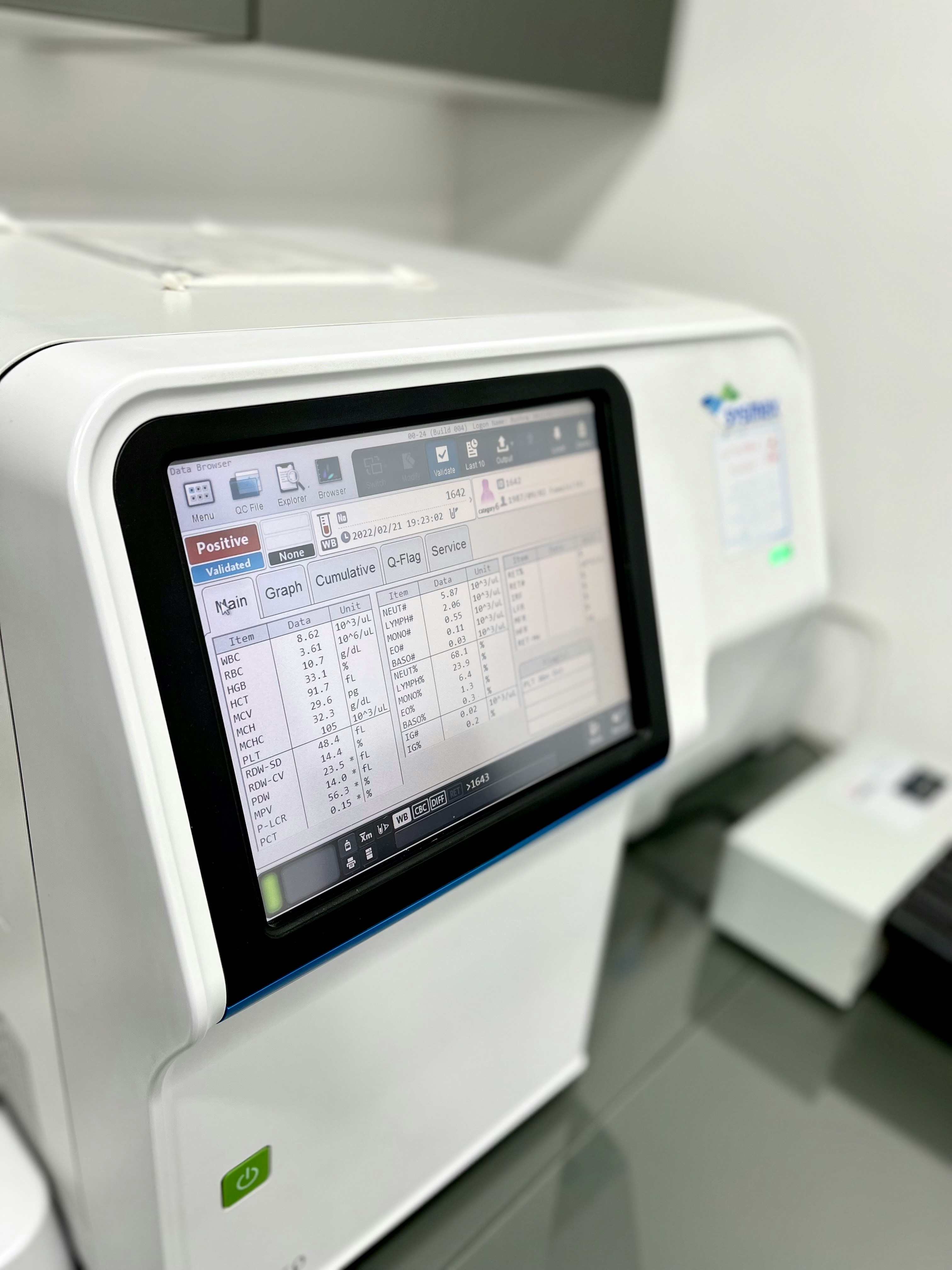Insights
Hiring Biometrics Talent on a Budget Without Compromising Quality
08 Apr, 202510 minutesRecruitment within biometrics is becoming increasingly complex. As demand grows across biost...

Recruitment within biometrics is becoming increasingly complex. As demand grows across biostatistics, clinical data management, and statistical programming, organisations are pressured to hire quickly, affordably, and without compromising quality. This is particularly true for emerging biotech firms and growing clinical teams, where resources are often limited and hiring decisions carry long-term implications.
These roles carry operational and regulatory responsibility. The right hire supports submission timelines, data accuracy, and inspection readiness. A delay in hiring or a misaligned appointment can result in added risk, project disruption, or regulatory consequences.
In this guide, we explore the cost pressures behind biometrics recruitment, highlight the less visible consequences of hiring delays, and set out clear, practical steps for hiring well within budget.
Why Biometrics Hiring Carries Unique Cost Pressures
Hiring for biometrics roles presents challenges that are distinct from other areas of clinical research. These functions are directly responsible for statistical accuracy, data integrity, and the alignment of outputs with global regulatory expectations. Any misstep in this process can impact submission timelines, protocol compliance, and overall trial delivery.
The talent pool is limited. Demand for experienced professionals in biostatistics, clinical data management, and statistical programming continues to grow as data structures become more complex and regulatory expectations evolve. The need for biostatisticians alone is projected to rise by 31% by 2031, placing additional pressure on clinical teams to act early and hire with precision.
In clinical data management jobs, technical proficiency must now extend to decentralised trial environments and diverse data inputs. Within biostatistics, teams are expected to build models that meet both scientific and regulatory scrutiny. These capabilities are developed over time through exposure to specific trial phases, systems, and submission standards.
The pressure to hire well—and to hire quickly—is driven by several factors:
- Greater technical specificity: Unlike roles in monitoring or study coordination, there is little flexibility in the technical skill sets required for statistics programming jobs or clinical data roles.
- High consequence of error: Biometrics outputs feed directly into submission packages and safety reporting. A misaligned hire introduces a risk that is hard to correct later.
- Limited supply of experienced professionals: The most qualified candidates are often not actively looking, and many have experience in only one or two key therapeutic areas.
- Increased regulatory scrutiny: Evolving standards around data traceability and statistical outputs have added complexity, particularly in global studies.
- Market-wide competition: Demand is rising quickly, especially in oncology, rare disease, and decentralised trials. This creates cost pressure even before a search begins.
These requirements set biometrics recruitment apart from broader life sciences hiring. Success depends on more than technical fit. It requires a structured understanding of regulatory frameworks, data integrity standards, and the impact of each role on study timelines.
The Hidden Cost Of Delayed Or Misdirected Hiring
Budget constraints are a reality for many CROs and small biotech companies. Within biometrics, decisions around timing, spending, and role prioritization often involve trade-offs. Delaying a hire or selecting a candidate based solely on availability or cost may appear efficient, but these approaches frequently lead to hidden financial and operational risks.
The disconnect lies in how hiring costs are typically understood. Most conversations focus on salaries, recruitment fees, or interim rates. What gets overlooked are the costs that appear later. Delays in hiring, poor alignment between job requirements and candidate skills, or rushed processes without technical screening can result in study setbacks, duplicated work, and increased risk during key trial milestones.
This is especially true in clinical data management and statistical programming. These roles are responsible for the quality of biometric data submitted to health authorities. When they are left vacant or misfiled, outputs fall behind schedule, data cleaning is delayed, and internal teams are pulled into firefighting rather than delivery.
Industry data shows that more than 80% of clinical trials face delays, and staffing gaps within biometrics functions are a common cause. For early-stage companies, even a short delay in database lock or statistical review can add tens of thousands in site, vendor, and monitoring costs.
Some of the most common hidden costs include the following:
- Delays in key deliverables: Missing a lead statistician or experienced statistical programmer can push back timelines for interim analyses and final submissions
- Higher spend on last-minute support: Interim hires brought in late often require more onboarding and are less embedded in therapeutic and data workflows
- Internal disruption: Clinical and regulatory leads may need to pause delivery work to support recruitment, interviews, and onboarding
- Increased turnover: Candidates hired without clear expectations or role alignment are more likely to leave mid-trial, restarting the cycle
The U.S. clinical data management sector has grown by 5.9% annually since 2019, reflecting its increasing complexity and importance. Yet hiring into these roles is still often reactive—driven by immediate need rather than strategic planning.
Before looking at cost-saving strategies, this point matters. Delaying or misdirecting biometrics recruitment might appear to protect budget. In practice, it often increases cost, adds risk, and reduces delivery confidence across the clinical research process
Hiring On A Budget Without Sacrificing Quality
Biometrics recruitment often carries a higher cost-per-hire than many other areas of clinical research. These roles are responsible for data accuracy, statistical outputs, and regulatory delivery. For CROs and biotech firms under financial pressure, this makes each hiring decision more difficult. Spending less can seem logical, but poorly structured or mistimed hiring can be just as expensive.
The goal is to spend with intention. That means clarifying what skills are essential, when the role needs to be filled, and how the process will support project outcomes.
The following strategies support more cost-effective hiring across biometrics recruitment:
1. Prioritise The Brief
Poorly structured job briefs are among the most common causes of hiring inefficiency. Including too many niche platforms, overlapping responsibilities, or conflicting expectations often results in longer timelines, higher salary demands, or unproductive shortlists. This issue is particularly acute in high-demand areas such as clinical data management and statistics programming jobs, where the available candidate pool is already narrow.
Instead of broadening the spec to appeal to more profiles, clarity should come from narrowing it. Focus on key responsibilities, essential systems experience, and project-specific priorities. For example, is oncology experience genuinely required, or will Phase III exposure suffice? Does the role need both SAS and R, or is one primary language sufficient? Greater clarity leads to more accurate alignment—and more realistic salary conversations.
2. Use The Right Hiring Model For Each Study Stage
Cost-efficiency is not always about hiring permanently. Contract and interim resources can be highly effective during submission build, database lock, or safety reporting. These models allow companies to scale expertise without committing long-term headcount, and without the delay often associated with internal approvals.
For early-phase projects or programmes in flux, short-term technical delivery may offer more value than a permanent hire who cannot be fully utilised. This is particularly relevant in biostatistics jobs, where the volume of work peaks at defined study points.
Where headcount is required long-term, early engagement still supports better cost control. Waiting until the need becomes urgent often results in reactive decisions, inflated costs, or extended timelines. For detailed planning, see our guide on when to recruit for your clinical trial team.
3. Use Insight to Support Spend
Budget forecasting without market data creates risk. In biometrics, where salaries vary significantly by therapeutic area, location, and programming environment, having current insight is essential. Misalignment between internal expectations and external availability can lead to stalled processes, extended time-to-hire, or lost candidates.
Planning should be informed by real-world insight, such as current salary bands, contract rates, role availability, and competitor activity. This is especially important for niche roles within clinical data management and advanced statistics programming, where demand often outpaces supply.
4. Balance Quality with Resource Planning
While senior hires bring oversight and experience, they are not always the most effective use of budget. For some programmes, a capable mid-level statistical programmer or data manager may deliver the required outcomes without the additional cost of a more senior profile.
Balancing teams in this way also supports future scaling. A layered team structure, with strong technical delivery beneath established leadership, provides continuity across trials and improves retention. This approach is particularly effective for small to mid-sized biotechs managing multiple projects with limited internal capacity.
More innovative hiring is not about cost-cutting. It is about knowing what you need, planning for it early, and making decisions that support the trial as a whole.
The Value Of Partnering With A Specialist Recruiter
Biometrics hiring requires accuracy, consistency, and domain-specific knowledge. These roles influence trial timelines, data quality, and submission outcomes. A misaligned hire at this level can disrupt delivery, reduce compliance confidence, and increase downstream costs.
Specialist recruiters provide more than shortlists. They bring structure, market context, and access to qualified professionals who already operate within the expectations of clinical research. In competitive fields like biostatistics, clinical data management, and statistical programming, this level of specialization is essential.
Working with a biometrics-focused recruiter offers several cost-saving benefits:
- Faster hiring through access to a qualified and active talent network
- Market-aligned planning based on current availability and salary data
- Structured shortlisting to reduce internal burden and accelerate decision-making
- Strategic fit based on technical scope, therapeutic area, and long-term team structure
- Informed support across both permanent and contract models, depending on study needs
Warman O’Brien supports biometrics hiring across the full project lifecycle. Our consultants operate exclusively within life sciences, with dedicated expertise in biostatistics recruitment, clinical data management jobs, and statistics programming jobs.
We work closely with hiring managers to define the right experience level, advise on salary and availability, and identify whether a contract or permanent hire offers the best outcome for a specific timeline or program.
Our approach includes:
- Clear role scoping aligned to market expectations and study objectives
- Targeted outreach through a pre-qualified network of biometrics professionals
- Pre-interview qualification based on regulatory, therapeutic, and technical criteria
- A focus on long-term retention, not just technical capability
In biometrics, where teams must balance cost, quality, and delivery under increasing regulatory pressure, the recruitment process must be exact. Specialist support ensures that each hire contributes meaningfully to the delivery, stability, and the success of your biometrics recruitment strategies.

Closing thoughts: Hiring Biometrics Talent With Precision
Biometrics roles are not interchangeable. Each hire influences the pace, accuracy, and credibility of clinical delivery. For CROs and biotech companies working within budget constraints, this makes clarity and planning essential.
Hiring decisions should be treated as strategic project milestones. Whether building out a new clinical data management function or securing statistical programming support at a critical study stage, success depends on timing, market knowledge, and role alignment. The financial cost of delay, duplication, or misfit can easily exceed the initial investment.
This is not about hiring faster. It is about hiring smarter. When clinical teams take a measured, informed approach, they protect delivery, reduce risk, and improve outcomes across the full trial lifecycle.
Partner with a Biometrics Specialist
At Warman O’Brien, we support biometrics recruitment across all trial stages, offering strategic advice and targeted hiring solutions. Our consultants work exclusively within life sciences, delivering trusted support across biostatistics, clinical data management jobs, and statistics programming.
Whether you need permanent hires, contract support, or guidance on the best model for your timeline, we help you build high-performing clinical teams that stay on track and inspection-ready.
Get in touch today to discuss how we can support your biometrics recruitment strategies.



